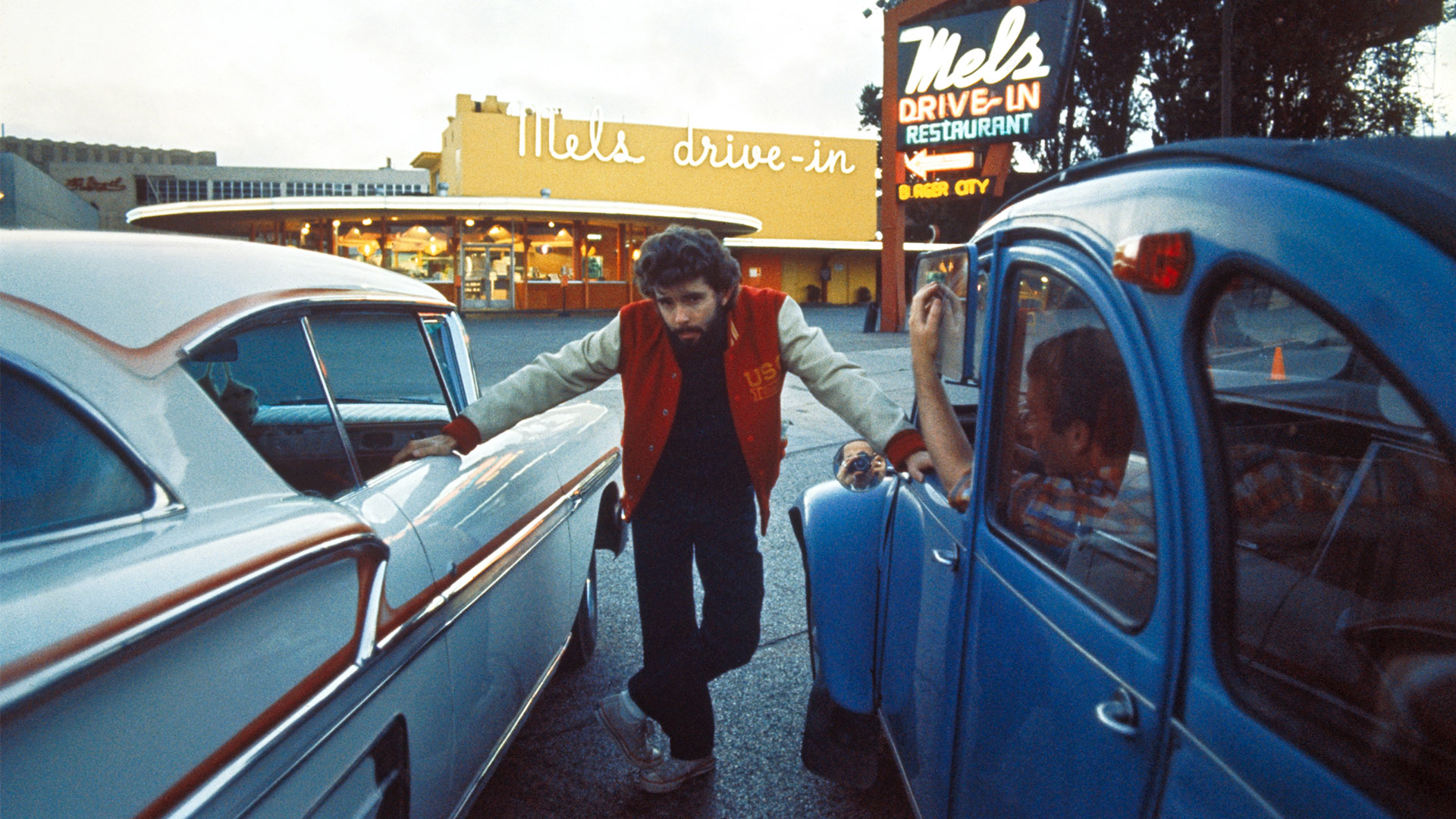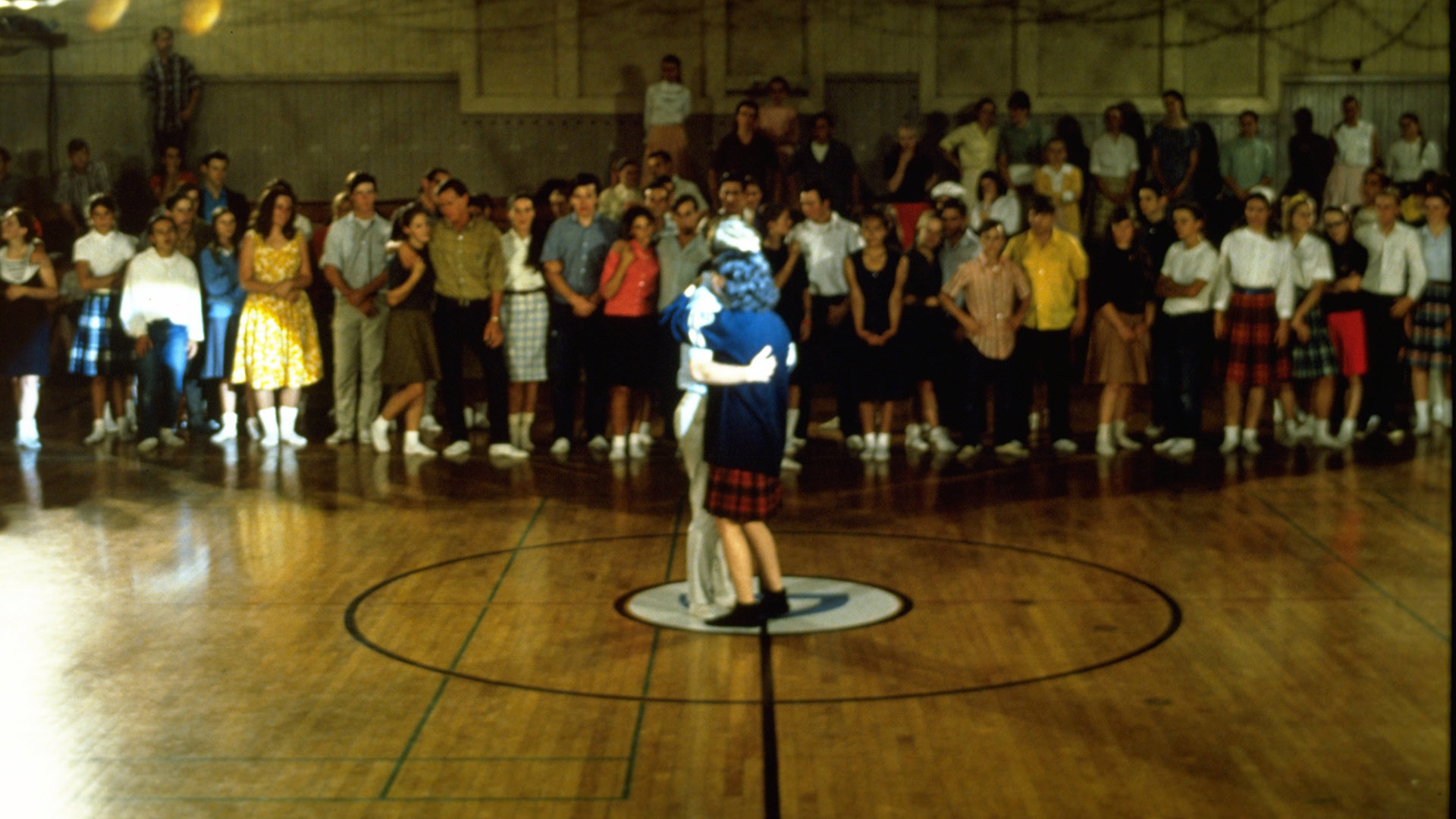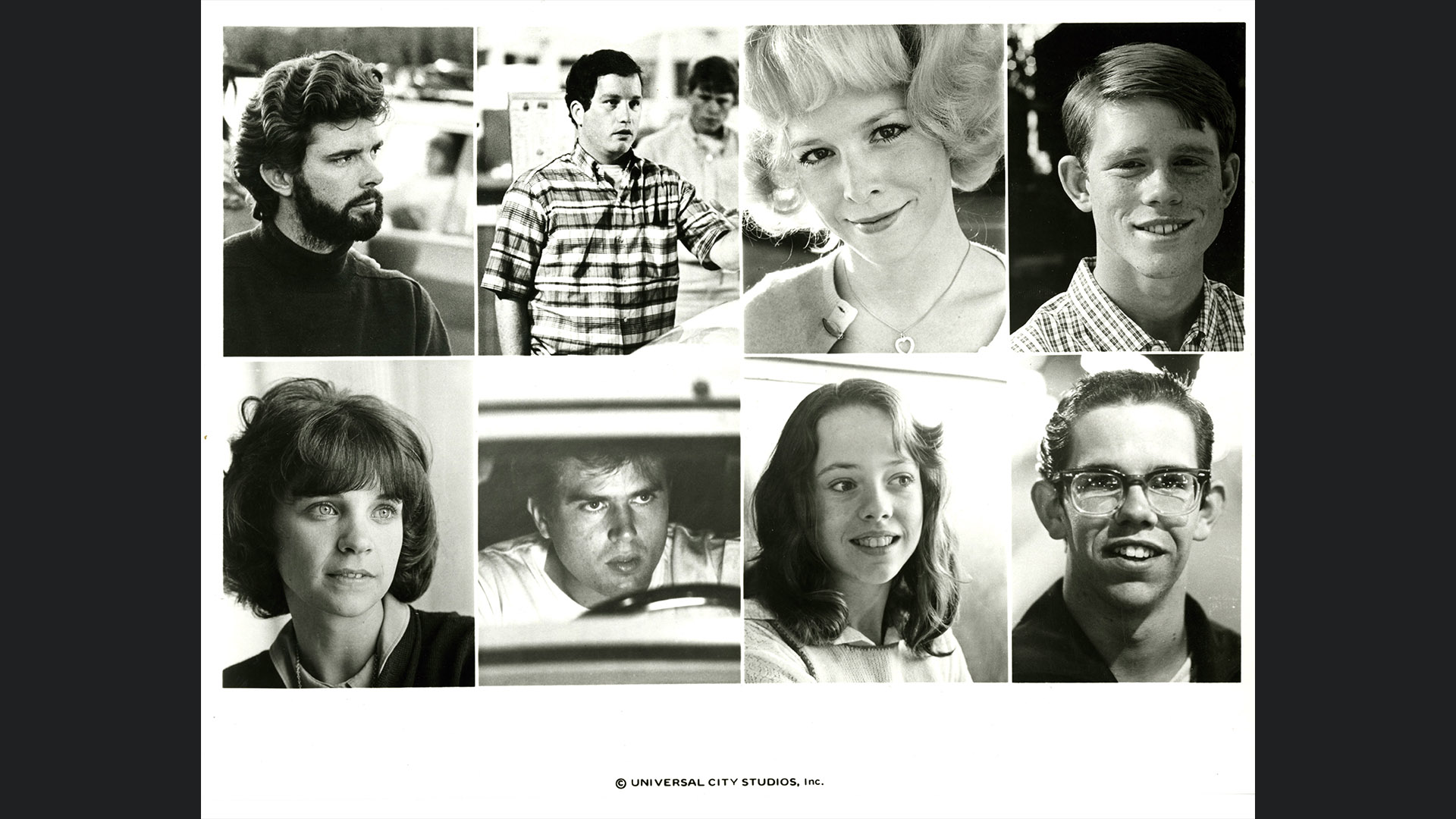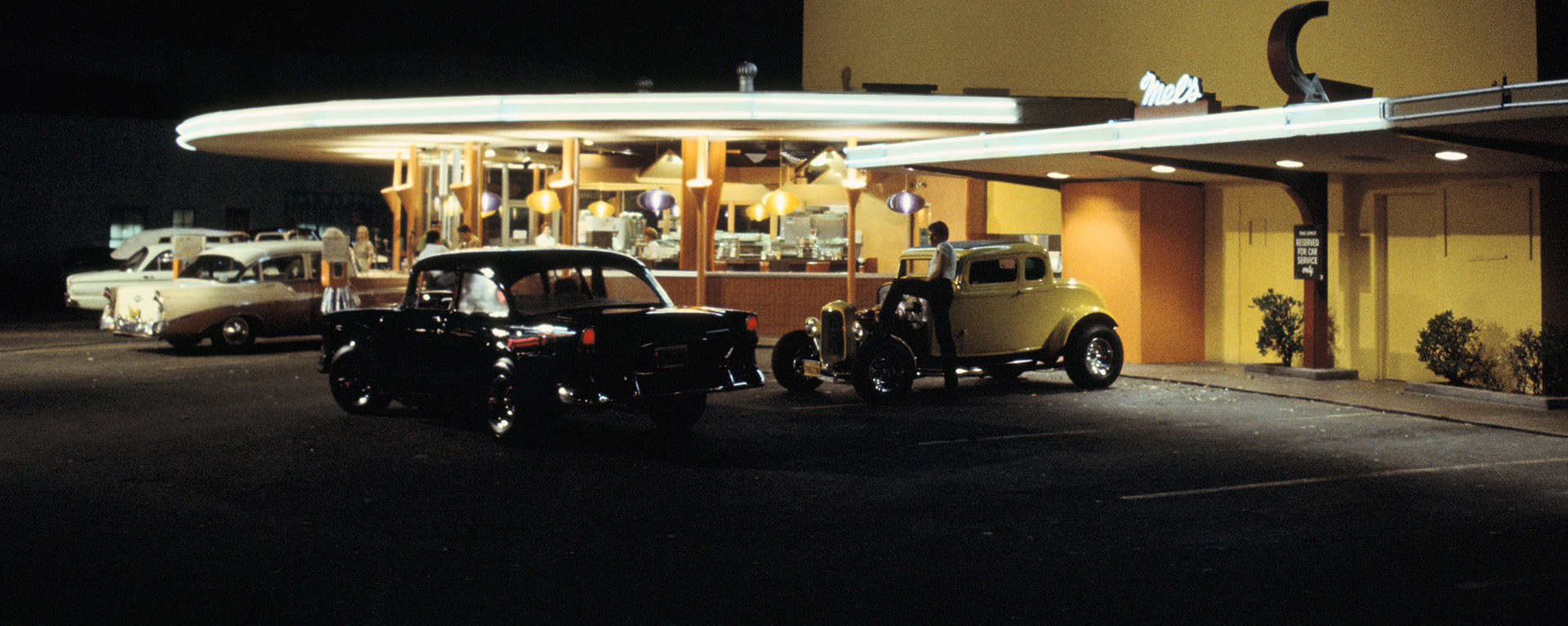Our First Movie: Lucasfilm Celebrates the 50th Anniversary of American Graffiti
It all started with a coming-of-age story from George Lucas.
When Lucasfilm was established in 1971, it was little more than a name on a legal document. But it was a name with a purpose. Filmmaker George Lucas was in need of a company to support his next project. Previously, he’d been involved with American Zoetrope, an independent studio established by Francis Ford Coppola and like-minded filmmakers to create their own works. Lucas made his first feature with Zoetrope, THX 1138, but soon after its release, the studio experienced a dire financial crisis. As Zoetrope faced an uncertain future, Lucas would go out on his own.
Incorporating Lucasfilm, Ltd. as an entity to carry his own independent films, the 27-year-old Lucas began work on his next feature. In the wake of THX’s bold vision of a futuristic society, it was Coppola who challenged Lucas to make something “warm and funny,” a story that entertained audiences as much as it inspired them to think. The material would come right out of Lucas’ adolescence in Modesto, his hometown in California’s Central Valley.
Collaborating on the screenplay with his friends Gloria Katz and Willard Huyck, Lucas envisioned American Graffiti as a coming-of-age story that took place on a single evening in the late summer of 1962 (the year Lucas graduated from high school). Two friends, Steve (Ron Howard) and Curt (Richard Dreyfuss) have each been accepted to college back east, and are set to leave the next morning. One of them however, is hesitant about leaving their small town, while the other is anxious to go. Over the course of the evening, both characters are challenged to decide just what they are going to do.
Interwoven with the narratives about Steve and Curt are a number of humorous misadventures involving characters like Steve’s strong-willed girlfriend, Laurie (Cindy Williams), radio DJ Wolfman Jack (playing himself), the eager young Terry the Toad (Charles Martin Smith) and his new friend Debbie (Candy Clark), as well as the popular hot rodder John Milner (Paul Le Mat) and a teen who is wise beyond her years named Carol (Mackenzie Phillips). An antagonist in the form of a rival hot rodder named Bob Falfa (Harrison Ford) cruises the streets in search of Milner.

Executive-produced by Francis Ford Coppola, American Graffiti was shot at a breakneck pace of mostly night shoots in the summer of 1972. Initially, the Marin County town of San Rafael was chosen as a shooting location, until the production moved quickly to the nearby community of Petaluma. Each day between shooting periods, Lucas would edit the film with Verna Fields, his then-wife Marcia Lucas, and sound designer Walter Murch. Onset, accomplished filmmaker Haskell Wexler traveled daily from Los Angeles to consult with Lucas on the cinematography (the director wanted the film to look “like a jukebox”).
American Graffiti captures a moment in time. The nation was at the peak of its first rock ‘n roll era, when cruising and street racing were activities that obsessed teenagers in small towns everywhere. America was also on the cusp of great cultural and socio-political change, from the British Invasion of new rock music to the civil rights movement to the Vietnam War. 50 years ago, audiences in 1973 would’ve been keenly aware of how much their country had changed in the preceding decade. As Graffiti premiered, for example, the Watergate trials had kept Americans glued to their television sets.
The film helped kickstart a wave of nostalgia in popular culture, with movies like Grease and television shows like Happy Days following in its wake. But Graffiti is not a lament for a bygone era. Lucas’ brilliance was to craft a story that spoke both to its time and to all time. It appeals to those who are interested in great music, teen fashions, and souped-up cars, but it’s also funny, endearing, and inspiring to anyone with its tale about young people making decisions that will shape their futures. In the wake of the movie’s release (to this day one of the most profitable films ever made), Lucas was touched to receive letters from young audience members who’d been moved by the film. They played an important role in the filmmaker’s crafting of his next project, a space fantasy meant specifically for young people called Star Wars.

It was after an industry screening of American Graffiti that 20th Century Fox executive Alan Ladd, Jr. decided that he would offer to support Lucas on whichever project he next had in mind. Thus, the possibility of making Star Wars became a reality. Graffiti’s producer, Gary Kurtz, joined Lucas in the same role on the new project. The director also used his earnings from the movie to purchase Lucasfilm’s first official headquarters, a large Victorian house in the small town of San Anselmo, as well as bankroll his new visual effects division formed to bring Star Wars to the screen, Industrial Light & Magic.
Distributed by Universal Pictures, Graffiti opens with the classic view of the studio’s spinning globe while, softly in the background, a radio is dialed to a station. As the intro for Wolfman Jack’s program blares, the first title pops onto screen in neon green lettering: A Lucasfilm Ltd / Coppola Co. Production. It was the first time the Lucasfilm name had been seen. Back in 1971, the company’s formation had received no fanfare. There was no press release issued, no formal announcement made. So American Graffiti was Lucasfilm’s introduction to the world. 50 years later, we’re proud to continue greeting audiences with our emblem in movie theaters and on television screens.
“The film is about teenagers moving forward and making decisions about what they want to do in life,” Lucas said at the time, himself still in his late twenties. “But it’s also about the fact that you can’t live in the past, which is part of the same idea. You have to move forward, things can’t stay the same; essentially that’s the point of the film.”

Lucas O. Seastrom is a writer and historian at Lucasfilm.
—
Lucasfilm | Timeless stories. Innovative storytelling.

